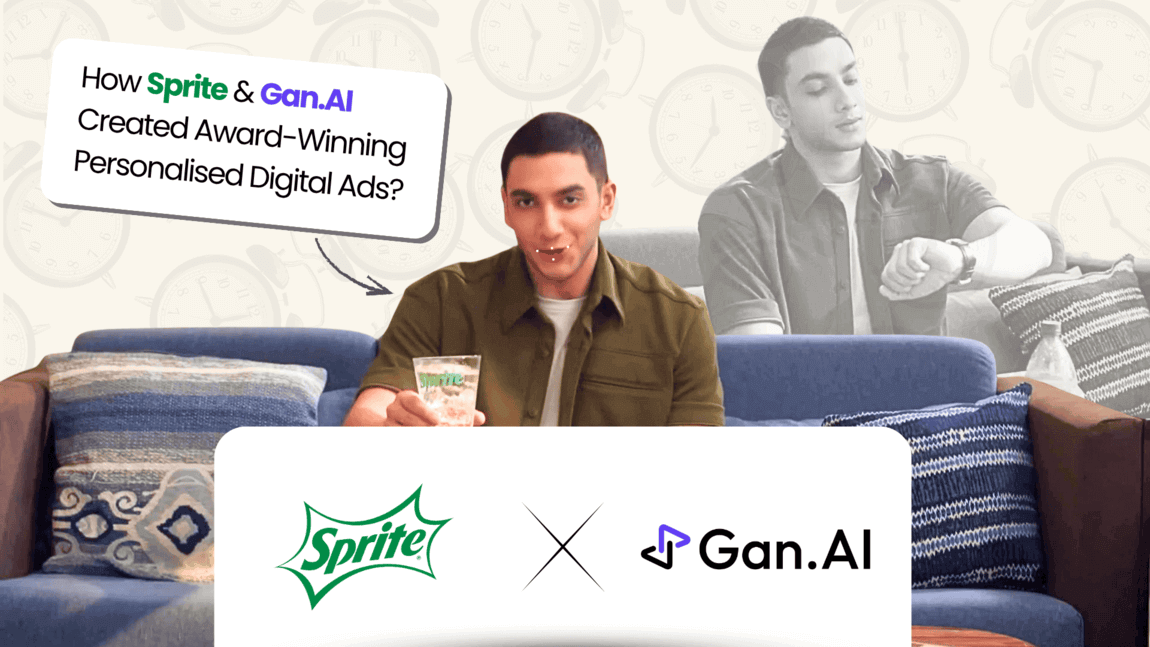Unlocking India's Linguistic Potential with Myna-Mini
Language is more than words—it's the rhythm of life. In India, that rhythm is complex and beautiful, woven together from over 450 languages. From the crowded streets of Mumbai to the quiet villages of Assam, people don't just speak—they express, they dance between tongues, shifting and blending languages like musicians swapping instruments in a jam session. This daily linguistic symphony is where Myna-Mini comes in, not as a dry piece of tech, but as an instrument designed to amplify the music of India’s voices.
What Living Multilingual Looks Like
Let’s step into a day in the life of an average Indian family. The morning begins in Kannada—"Nidde aayta?" (Did you sleep well?) asks the father. The mother answers in English while adding a sprinkle of Tamil because that's how it works in this household. When the kids leave for school, they switch to Hindi or English, depending on what subjects they're excited about. The house is a collision of sounds, languages bouncing off walls, a constant shift of context and emotion. This isn't a unique story—it’s the way millions of families navigate their days across India.
But it’s not just within the walls of a household. Step outside, and you’ll find the chaos of the marketplace, where vendors shout out prices in Hindi while switching to Bengali or Tamil for a customer. Auto drivers in Mumbai call out in Marathi, but shift to broken English when they hear a passenger’s accent. This constant weaving of languages isn’t a chore—it’s an instinct, a second nature that allows for connection despite diversity.
Yet, technology has never caught up with this reality. It lags, clunky and awkward, treating languages as isolated units, forcing people to bend their tongues to fit a single mold. The stiffness of existing tools feels unnatural, a betrayal of the fluidity with which people naturally communicate. That’s where Myna-Mini changes the game. It’s not here to dictate how languages should be used—it’s here to follow, to learn, to adapt. Myna-Mini was built for India’s unique, messy, and beautiful way of communicating, for the spontaneity that defines how we express ourselves.
Myna-Mini: More Than Text-to-Speech, It’s Text-to-Soul
Most TTS systems sound like they’re trying their best to be a machine—dry, robotic, without an ounce of feeling. Myna-Mini is different. Imagine typing in Hinglish—"Mujhe thoda sa rest chahiye, I’m super tired"—and having it read back to you in a tone that gets you. It doesn’t break mid-sentence or sound like it’s reading off a spreadsheet. Instead, it gives voice to what you mean. It’s not just a translation of text into sound—it’s a translation of thought into voice.
Think about the voice you need to hear when you’re tired, or when you’re excited about a new job. It isn’t flat and lifeless; it’s full of warmth, of energy. Myna-Mini embraces the way people actually talk—code-switching, using the words that fit best, even if they come from different languages. It feels like a friend who gets your quirks, who knows how you slip in and out of languages, and who speaks just like that.
The way we communicate is an expression of who we are. It’s the emotion in our voices, the mixture of languages we use, the particular words we choose to convey our feelings. Myna-Mini doesn’t just output text in a synthetic voice—it brings out the essence behind the words. It respects the seamless blending of Hindi, English, Tamil, and everything in between, knowing that meaning isn't always confined to a single language.
Language Learning: How Myna-Mini Makes It Real
Learning a new language is hard, but it doesn’t have to be soulless. In India, learning a second language is more than just a skill—it’s often a ticket to a better job, higher education, or simply broader horizons. But the way we’re taught to learn languages? It’s often rote memorization, old books, rules without context. You learn, but you never feel it in your bones.
Language should never feel like a chore. Imagine trying to learn English in a classroom where you’re forced to repeat rigid phrases that no one actually says. The sentences don’t flow; they’re robotic. But think of learning through Myna-Mini—a voice that doesn’t just tell you “Hello, how are you?” but instead says “Hey, kya haal hai? How’s it going?” Mixing familiar with new, grounding you in what you know while inviting you to explore more. Myna-Mini speaks in a way that makes sense—mixing in your native Hindi when you need it, giving you English in a flow you understand.
It’s like having an older sibling who speaks your language but knows the new one better, helping you learn naturally, making it feel less like a hurdle and more like an invitation. You start recognizing phrases, picking up on the rhythm, and soon you find yourself using those phrases comfortably. It becomes instinctive, just like the conversations you grew up with. Language stops being an intimidating stranger and becomes something familiar—something yours.
And it's not just about spoken language. The emotional nuance that Myna-Mini captures helps you understand not just what is being said, but why it is being said that way. When you're learning, understanding the “why” behind tone and inflection can make all the difference. It's the difference between sounding like a textbook and sounding like a real person.
Not Just Words, But Feelings
There’s something magical about listening to real speech—the pauses, the changes in tone, the rhythm. When you hear someone speak naturally, you don’t just understand the words; you understand the emotion, the intent. Myna-Mini brings this nuance to the table, making language learning less about studying and more about feeling the language.
Think about the difference between reading “I’m so happy” in a monotone versus hearing it said with genuine excitement. You feel the words differently. Myna-Mini knows that the way something is said is just as important as the words themselves. It’s those little things—the hesitations, the excitement in a voice, the warmth in a greeting—that make a difference. Suddenly, it’s not just about trying to memorize words. It’s about hearing how those words live and breathe in a conversation, giving learners a real sense of how to use them.
Imagine being able to hear someone tell a story with all the highs and lows—the dramatic pauses, the sudden laughter. Myna-Mini isn’t just reading lines; it’s performing, it’s participating, it’s bringing the story to life. For a learner, this is transformative. It moves learning beyond the page and into the world of real, lived experiences.
Code-Mixing: Because That's How We Talk
Walk down any busy street in India and listen. You won’t hear pure Hindi, or English, or Tamil. What you’ll hear is a rich mix—"Arre yaar, let’s just leave it" or "I’ll do it kal morning." Code-mixing isn’t some academic concept; it’s life. It’s how people here communicate—naturally, without thinking twice.
Code-mixing reflects comfort, a familiarity with multiple worlds. It’s the spice of everyday conversations, and yet, until now, technology has been hopeless at keeping up. It either forces you to stick to one language or breaks when you try to mix them. The result? Stilted conversations that feel unnatural. Myna-Mini understands this flow. It reads Hinglish, Tanglish, or whatever mix you throw at it, making it sound just the way you intended—real, familiar, true to how you think and speak.
For learners, this is gold. It means hearing real conversations the way they happen, not some sanitized version that no one actually uses. It means understanding that you can switch languages mid-sentence and that it’s not wrong—it’s real. Language is fluid, and the way we use it depends on who we’re with and what we’re feeling. Myna-Mini captures that fluidity, giving people a tool that truly reflects how they communicate.
Breaking Down Barriers with a Voice for Everyone
Let’s be real—language can be a divider. If you don’t speak English fluently, you’re often left out. Jobs, information, opportunities—they can all seem out of reach just because you speak in your native tongue. This is where TTS can make a difference—leveling the playing field, making information accessible, giving everyone a voice.
Think of a farmer in Tamil Nadu, someone who knows the land, knows their crops, but struggles to get crucial information because it’s all in Hindi or English. With Myna-Mini, that farmer can listen in Tamil—clearly, easily, and in a voice that feels like home. It’s not about technology for technology’s sake; it’s about using tech to empower, to make sure no one is left behind because of the language they speak.
Imagine a healthcare worker in a remote village who needs to explain a treatment plan to a patient. With Myna-Mini, they can do that in the language the patient understands, in a tone that reassures and comforts. It’s about breaking down complex information into something accessible, something that feels personal. It’s about making sure that language doesn’t stand in the way of someone getting the care they need.
Voice: The Most Natural Way to Learn
Think back to when you learned to speak as a child. You didn’t start with a book; you started by listening. Voice is the most natural form of learning, and Myna-Mini taps into this. Imagine a student in a rural area who doesn’t have access to fancy English classes. With Myna-Mini, they can listen to lessons, hear the correct pronunciations, and practice—all without needing an expensive tutor.
It’s not about perfection; it’s about comfort. It’s about making sure that learning isn’t just accessible but enjoyable. Myna-Mini brings a conversational tone to learning—like listening to a teacher who’s genuinely passionate, who gets you excited about what you’re learning, who makes you feel like it’s all within reach.
Think of the difference between reading a script and listening to a storyteller. Myna-Mini is that storyteller. It turns dry lessons into engaging stories. It makes language alive, something that moves and grows. And when learning feels alive, it sticks. It becomes a part of you, not just something you memorize for a test.
Preserving Culture Through Voice
Languages carry culture. They carry stories, traditions, ways of seeing the world. But in India, many of these languages are at risk. As more people move to cities, as more young people switch to English or Hindi, smaller languages start to fade. But they don’t have to. Myna-Mini can help keep these languages alive, not just in dusty books but in a voice that tells stories, that sings lullabies, that remembers.
Imagine a child listening to a bedtime story in Bhojpuri, hearing the language of their grandparents, keeping that connection alive. That’s what TTS can do—it’s about more than just words. It’s about ensuring that the music of each language, its unique cadence, continues to be heard.
It’s not just about language as a means of communication. It’s about identity, about roots. When you hear a story in your mother tongue, you feel something deeper—a connection to your heritage, to your community. Myna-Mini can play a role in preserving this feeling, making sure that even as the world changes, we don’t lose sight of where we came from.
The Future is Multilingual, and It's Here
India’s future isn’t about picking one language over another—it’s about celebrating them all. As we grow more connected, we need technology that respects the way we naturally communicate, that supports all the voices that make up this country. TTS like Myna-Mini is a step towards that future—a future where businesses talk to customers in their language, where healthcare information is available in every tongue, where learning isn’t limited by language.
Think of a doctor in a rural clinic explaining a complex diagnosis. Instead of struggling with language barriers, they can use TTS to explain it in a way that’s clear and comforting to the patient. Or think of a business that wants to connect with customers in different parts of the country—Myna-Mini helps them speak directly, genuinely, in a way that builds real relationships.
The world is moving towards greater connectivity, but true connection comes from understanding, from feeling heard. Myna-Mini is about making sure that as India steps into the future, it does so without leaving any voices behind. It’s about embracing every language, every dialect, every story, and making space for them in the digital world.
Conclusion: Join the Movement
Myna-Mini isn’t just another tool. It’s a way to make sure that language doesn’t become a barrier, but a bridge. It’s about giving people the chance to connect, to learn, to grow, in the language that’s most natural to them. Whether you’re learning, teaching, building a business, or just sharing a story—Myna-Mini is there to help you do it in a voice that feels like your own.
Let’s make technology that respects the beauty of how we speak, that empowers rather than isolates, that connects rather than divides. Let’s make sure every voice is heard, every story is told, and every language is celebrated, because language is what makes us human, and every human deserves to be heard.
Let’s build a future where technology amplifies the best of our linguistic diversity, where no language is considered less important, and where every person, regardless of their background, has the power to communicate, to connect, and to grow.
.avif)

%201.svg)
















